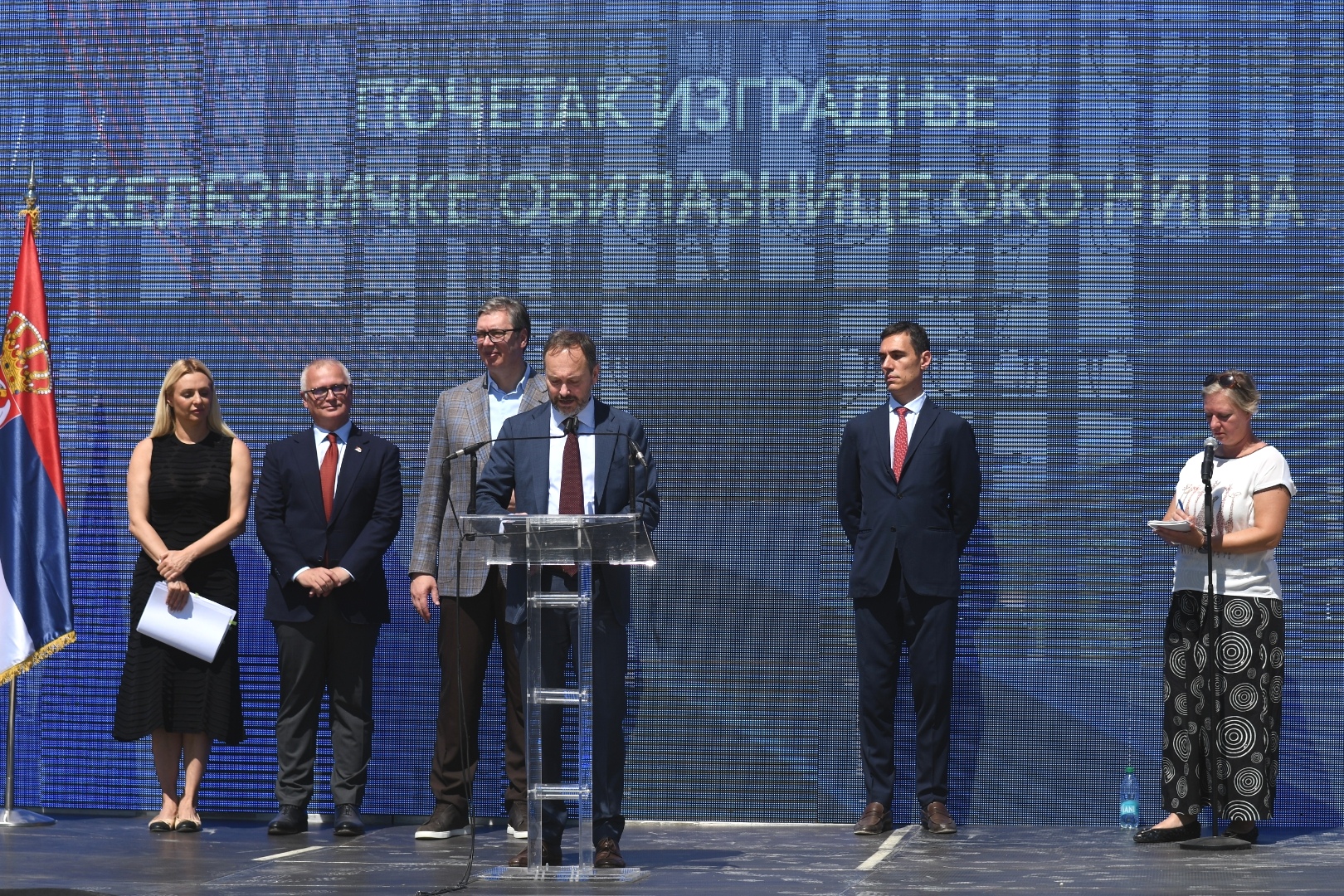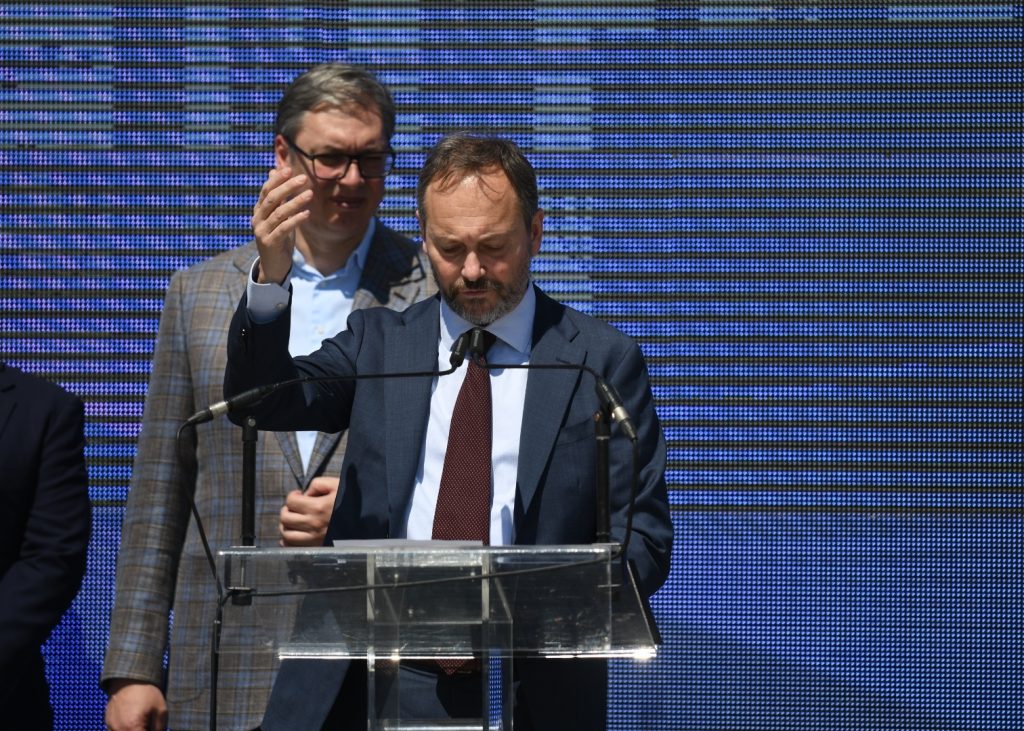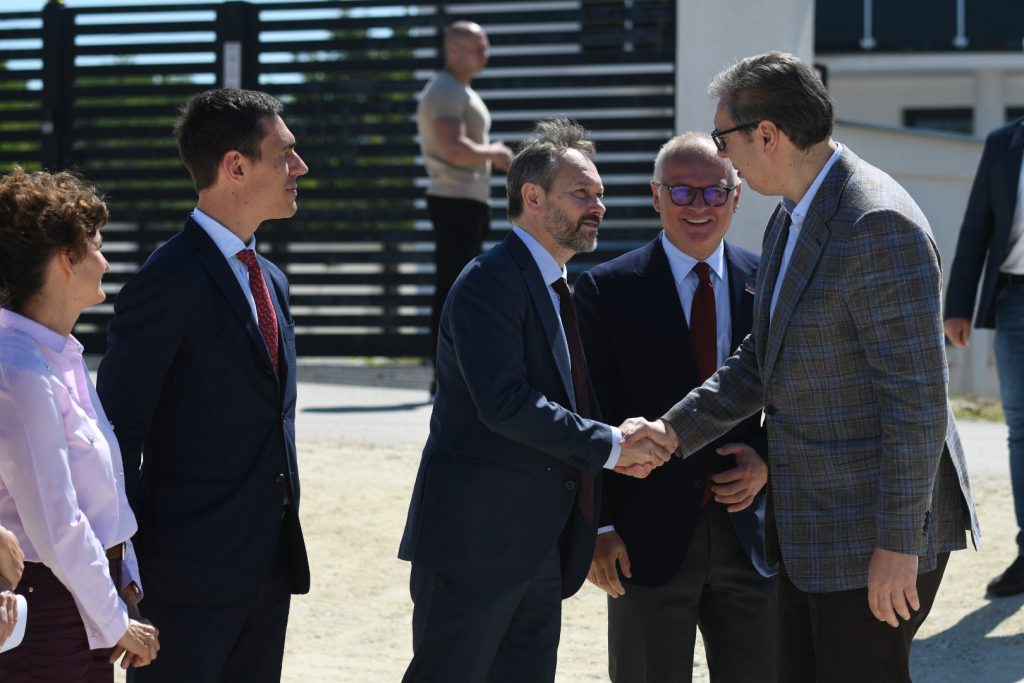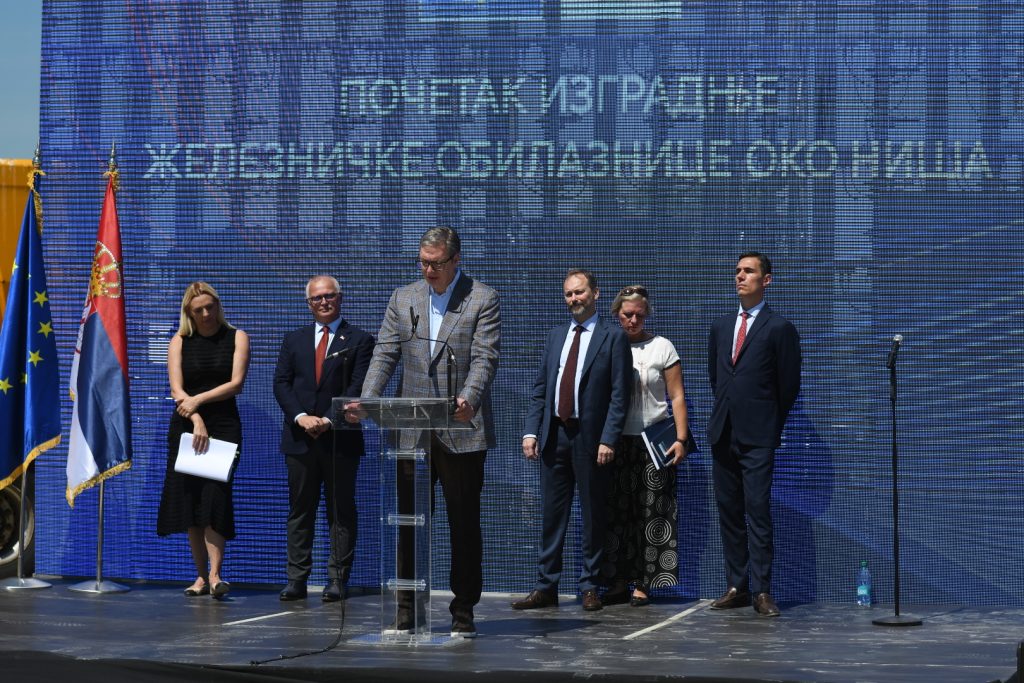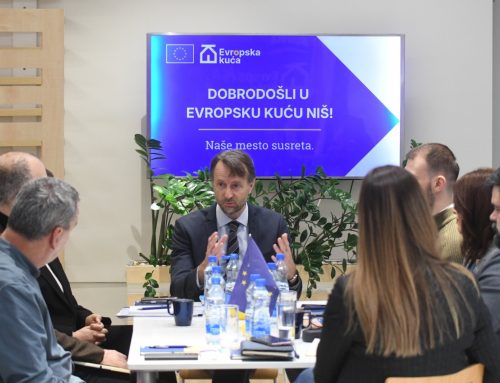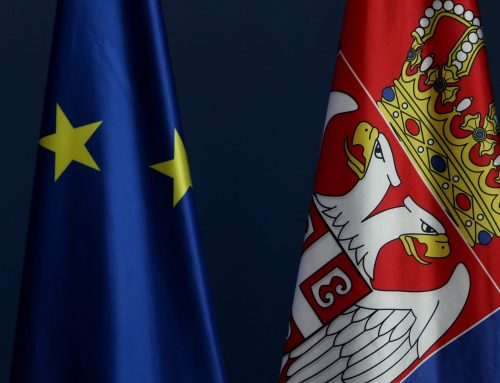Ambassador of the European Union to Serbia, Emanuele Giaufret, and the president of Serbia, Aleksandar Vučić, visited the commencement of works on construction of the Niš Railway bypass, as part of the overall modernization of Nis – Dimitrovgrad railway.
The railway bypass will enable more efficient flow of freight transport at first, but facilitate further development of the City of Nis and improve safety and efficiency of the urban transport.
The EU ambassador said today that the railway bypass around Niš will be oxygen that will encourage the development of Niš and the South-East part of Serbia, as well as that the city is an important railway hub that connects the region with four seaports – Istanbul, Varna, Thessaloniki, and Durrës.
“Constructing the railway bypass around the City of Niš is all that and much more; it is oxygen for further development of the City of Niš and the beautiful South-East region of Serbia, on sustainable and environmentally based principles,” said the ambassador.
Giaufret stated that the railway bypass will prevent freight transport from passing through the city centre, reduce congestion, make urban transport safer, and enable citizens to commute more efficiently.
“The electrification of the overall Niš – Dimitrovgrad railway line will contribute to the reduction of air pollution in Niš, currently coming from diesel traction trains in the very urban zone of Niš,” said Giaufret.
The investment is part of the Economic and Investment Plan for the Western Balkans, which brings more than 30 Bil Euro for fostering development of the entire region.
The Head of Delegation of the EU to Serbia reminded that the EU invests in the future of Serbia and its citizens through the Growth Plan for the Western Balkans, worth €6 billion for the period 2024-2027.
“The Growth Plan for the Western Balkans will put additional emphasis on synergy between investments and necessary reforms. Railway projects, in particular Rail Corridor X through Serbia, will remain a priority. Travel time will be reduced, enabling more connectivity and interaction between citizens, but also the economy would benefit from the reliable railway connection, modernised in line with EU standards,” said Giaufret.
President Aleksandar Vučić said that Serbia invests a lot of money in the development of Niš and thanked the EU for the financial support stating, “80 million Euro grants for Sicevo – Dimitrovgrad section and 35 million Euro for Nis Bypass, in total 115milion Euro for Nis – Dimitrovgrad modernization is a lot”
After the reconstruction of the Railway Corridor X, it will take one hour and 40 minutes to travel from Belgrade to Niš, and from Budapest to Niš only four and a half hours, said the President of Serbia and added that EU investments in Serbian railways could be greater.
The President of Serbia said that the railway bypass will be for train speeds of up to 160 km per hour and that it is part of the Niš-Dimitrovgrad railway and reminded that the 23-kilometre-long section from Nis to Brestovac is currently being worked on.
Since 2000, EU support to the transport sector in Serbia has reached more than €550 million in grants. In addition, more than €50 millions of EU grants have been set aside for the preparation of strategic priority investments in the field of transport, with a total value exceeding €6 billion, which will be realised as a combination of EU grants and favourable loans in the future.
Read more information about EU investment in transport in Serbia here.

